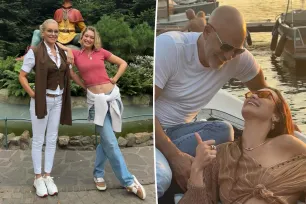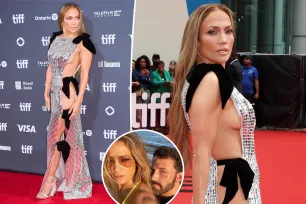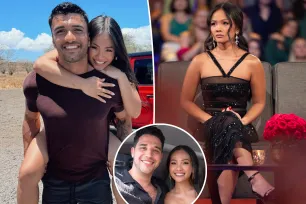Mammootty is now considered a GOAT (Greatest Of All Time), with countless exceptional performances, many awards and a wealth of brilliant films to his credit. But before all the glitz and glam, before he became the icon he is today, what made those who gave him his first acting jobs take a chance on him? What did they see in him, especially since he wasn’t particularly skilled as an actor in his early days? This question becomes even more intriguing (and perhaps self-explanatory) when considering the fact that KG George, often regarded as one of the finest filmmakers in the history of Malayalam cinema, gave Mammootty, who turns 73 on Saturday (September 7), his first major role in his Mela (1980).
Mela, like George’s debut film Swapnadanam (1976), was remarkably fresh, especially in terms of its theme, story and treatment. Revolving around a dwarf circus clown, Govindan Kutty (Raghu), who lives in an ableist society where those with disabilities must prove themselves extraordinarily talented or inspiring to earn some respect and adoration, Mela also featured a young, unfamiliar actor in a key role — as Vijayan (Mammootty), a bike jumper in the same circus where Govindan works.

Unlike his first two movies, Anubhavangal Paalichakal (1971) and Kaalachakram (1973), where he played uncredited roles, and Vilkkanundu Swapnangal (1980), where he depicted his first credited role but lacked significant screen time and substance, Mammootty’s character in Mela played a key role in driving the narrative, giving him ample opportunity to showcase his abilities. Though his dialogue delivery and body language were stiff and stoic, compared to the more natural performances of his co-stars, it was a considerable improvement from his underwhelming portrayal in Vilkkanundu Swapnangal. In Mammootty, George, who passed away on September 24, 2023, saw a multifaceted performer, capable of exuding both style and swagger, as well as a physical charm that could easily captivate the masses. His masculine features, contrasted by his gentle smile, created a compelling balance, further enhancing his appeal.
“When the works for Mela were going on in Ernakulam, I went to meet George sir. Initially, I didn’t get a positive response from him. Later, he asked me to stick around and learn before my scenes were scheduled. I was supposed to play the role of a circus artist. He asked if I knew how to ride a horse. I hadn’t even seen a horse in real life at that point and was worried I’d lose my chance because of it. Then he asked if I could ride a motorcycle. Although I wasn’t great at it, and knew only a little, since I was willing to sacrifice myself to be an actor, I said ‘yes,’ and that’s how I got the role,” Mammootty recalled in the documentary 8½ Intercuts, based on the life and films of KG George.
 In Mammootty, KG George saw a multifaceted performer, capable of exuding both style and swagger, as well as a physical charm that could easily captivate the masses. (Express archive photo)
In Mammootty, KG George saw a multifaceted performer, capable of exuding both style and swagger, as well as a physical charm that could easily captivate the masses. (Express archive photo)
While, in subsequent films, directors cast Mammootty in more conventional roles, emphasising his physique and traits to enhance characters that fit the archetype of the macho Mallu man — short-tempered, irresponsible, loud and prone to violence — often resulting in one-dimensional portrayals, the male characters in George’s films were far more complex and layered. Although Mammootty has played numerous cop roles throughout his career, his Jacob Eeraly in Yavanika (1982) stood apart from anything he did afterwards. Eeraly wasn’t just different from the typical Mallu cop — he also defied the conventional masculine archetype seen in Mammootty’s roles after Mela. Unlike typical cop characters, Eeraly wasn’t loud or abusive; he didn’t get into physical fights or resort to third-degree to extract truths. Instead, he was a more authentic figure — shrewd, clever and manipulative and using these traits, he uncovered the truth. His body language and tone conveyed a mixture of pity and disdain toward anyone not in uniform, except his wife and child.
“He (George) knows how to mould actors to suit his characters. You can see that from his first movie itself,” actor Nedumudi Venu commented in 8½ Intercuts. Mammootty’s performance as Eeraly, compared to his work with other directors, clearly showed how George understood actors’ strengths and weaknesses even better than they did themselves. “I just want an actor. I choose my cast based on their peculiarities as actors — not stars. If those peculiarities suit my characters, I cast them. This approach is evident right from my first film,” George explained in the documentary. Unfortunately, this level of clarity and conviction was something George had to compromise on later in his career, and that too for Mammootty himself, which eventually resulted in the director’s abrupt departure from cinema.
 KG George is often regarded as one of the finest filmmakers in the history of Malayalam cinema. (Express archive photo)
KG George is often regarded as one of the finest filmmakers in the history of Malayalam cinema. (Express archive photo)
In Lekhayude Maranam Oru Flashback (1983), a film that remains ever-relevant due to its bold subject matter — especially today, in the wake of the Justice Hema Committee report and its revelations — and its even bolder execution, Mammootty played the role of a superstar, Prem Sagar, who wields immense power in the industry and uses it to exploit women. The film unflinchingly exposed the industry’s flaws and its disturbing treatment of women, with George casting Mammootty as a symbol of countless superstars who regard women as inferior beings and treat them as mere objects for sexual gratification. By that point, Mammootty had steadily honed his acting skills, mastering the ability to fully inhabit his characters and express their essence with precision. George capitalised on this and assigned him a role that blended the traits of various prominent stars of that era, which he executed with remarkable finesse.
The irony, however, lies in the fact that Mammootty himself eventually rose to superstardom, wielding significant influence, yet has remained notably and conveniently silent on issues concerning the safety of women and the exploitation they face in an industry where he is one of the most dominant figures.
Watch Mammootty and KG George’s Yavanika here:
In Adaminte Vaariyellu (1984), George skillfully leveraged Mammootty’s charm and magnetism, which by then had captivated much of the Malayali audience, portraying him as a youthful, charismatic man who knows how to easily win over women. Even in this film, George avoided casting Mammootty in a traditionally masculine role. His character, Jose, is more of a beta male — a man with whom Alice (Srividya), a married woman, forms a no-strings-attached relationship as he’s an emotionally available and satisfying presence in her life, in contrast to her husband (Bharath Gopi) who exploits her as a pawn to close business deals, offering her body to powerful men. For Alice, emotionally estranged from her family despite living under the same roof, Jose is an escape to the vitality and youth she lost while being trapped in a life as a sex slave. Mammootty naturally embodied Jose’s exuberance, making the character an ideal counterpoint to Alice’s otherwise bleak existence.
“Mammootty’s greatest strength and asset is that his physique is versatile enough to suit any role. He has the ability to play any character,” George remarked during an old chat with Kairali TV. The diverse characters Mammootty played in George’s films affirm the director’s belief in this versatility. For example, after all the aforementioned movies, in Kathakku Pinnil (1987), Mammootty portrayed a playwright who encounters a woman running for her life. Although AR Thampi (Mammootty) had flaws, he was not a villain. Through this character, George illustrated the compassion that an artist or writer should have towards the oppressed, while also emphasising their limited influence in society and their struggle to make their voices heard beyond their work and Mammootty handled it with perfection.
View this post on Instagram
A post shared by Thaara K George (@stylethaarag)
In Mattoral (1988), Mammootty played an extension of the director’s notion of an ideal man and male romantic partner as Balan (Mammootty) and Veni (Urvashi) share not only their bodies but also their thoughts, struggles, joys, doubts and everyday moments. They serve as a contrasting mirror image to their friends Kaimal (Karamana Janardanan Nair) and Susheela (Seema), who are struggling in their marriage. George saw in Mammootty the perfect replica of a selfless man striving to rekindle the bond between a husband and wife whose love remains intact but is threatened by the typical male tendency to take women for granted and the ensuing lack of communication. At the same time, every glance and touch between Balan and Veni was endearing and Mammootty’s subtle portrayal of intense emotions was visible in Mattoral too.
Mammootty and George collaborated again only a decade later, for the last time, on Elavamkodu Desam (1998), which also became George’s final directorial venture. However, the period drama noticeably lacked three essential elements: George’s distinct craftsmanship, Mammootty’s usual stellar performance and the chemistry between them. While George had every right as a filmmaker to experiment with different genres, Elavamkodu Desam demonstrated that period dramas were not his strength as it fell short of the qualities typically praised in his work. The film flopped at the box office and received poor reviews.
 Mammootty with director KG George and cinematographer Ramachandra Babu on the sets of Elavamkodu Desam. (Express archive photo)
Mammootty with director KG George and cinematographer Ramachandra Babu on the sets of Elavamkodu Desam. (Express archive photo)
However, in his memoir Flashback Enteyum Cinemayudeyum, George claimed that Mammootty was to blame for the film’s failure. He stated, “Mammootty’s actions and behaviour were more than I could withstand. He was no longer the Mammootty I had known or the actor who came to perform in my earlier films. This was the main reason for the film’s failure. As a director, I expect actors to contribute in ways that align with my vision. ‘The director’s film’ ends when an actor performs only to serve their own interests and image, which I felt was the case with Mammootty in Elavamkodu Desam. I once read that Mammootty credited MT Vasudevan Nair with discovering the actor in him through the unfinished film Devalokam and that I gave him diverse and significant roles. That is true, especially if we reflect on his early career. But as he grew and became a big star, I wasn’t surprised that he could no longer give my films the attention he once did. I never felt sorrow over it, then or now, because his mindset could never alter my own culture or traditions. But such experiences led me to conclude that I could no longer make films in the old way.”
Despite this, George did not harbour hard feelings toward Mammootty and the actor continued to regard George as one of his mentors in cinema who had provided him with significant opportunities. “Even if I wasn’t there, Mammootty would have been an actor, and even if Mammootty wasn’t there, I would have been a director. But we happened to meet and journey together,” George said in another interview with Kairali TV. To this day, only a few directors have understood, explored and experimented with Mammootty as deeply as George did and hence, his legacy is incomplete without the mention of the filmmaker.
Disclaimer: The copyright of this article belongs to the original author. Reposting this article is solely for the purpose of information dissemination and does not constitute any investment advice. If there is any infringement, please contact us immediately. We will make corrections or deletions as necessary. Thank you.







